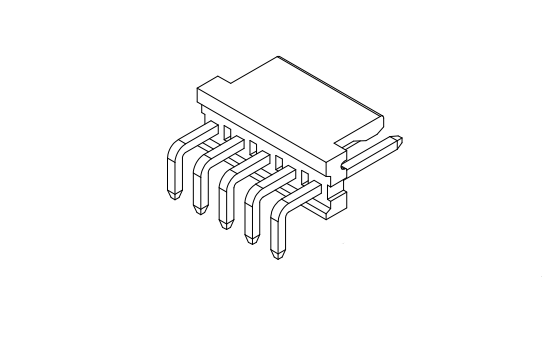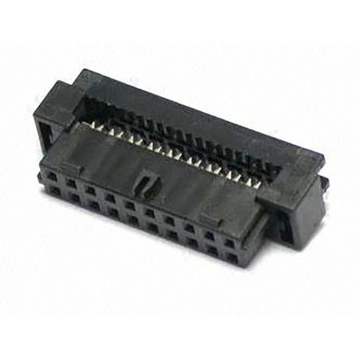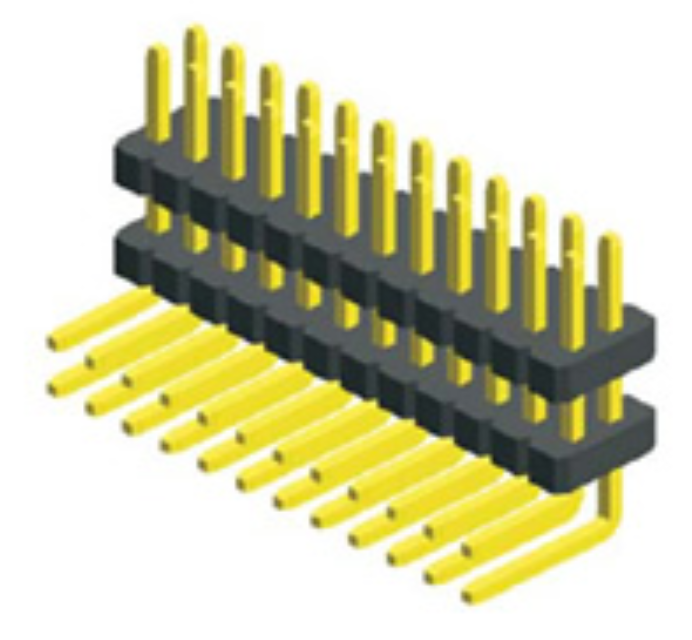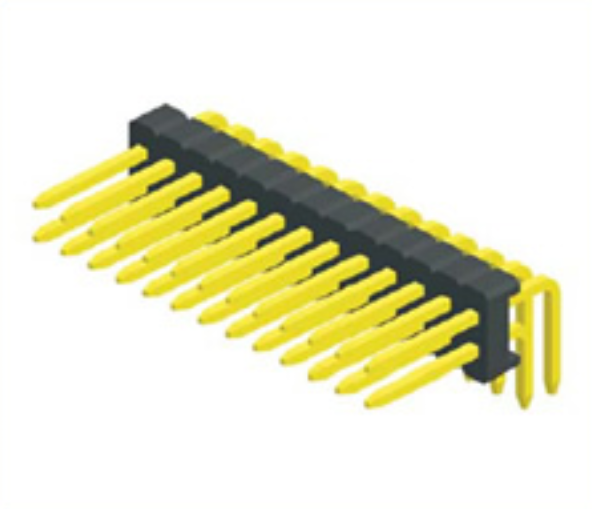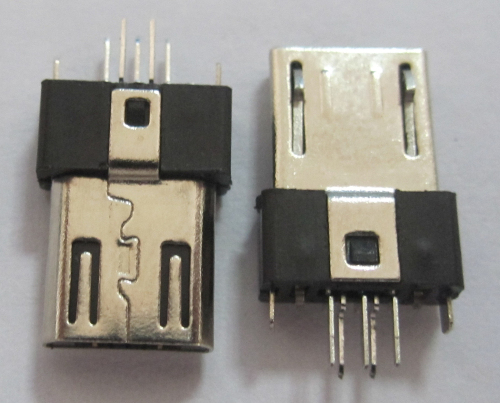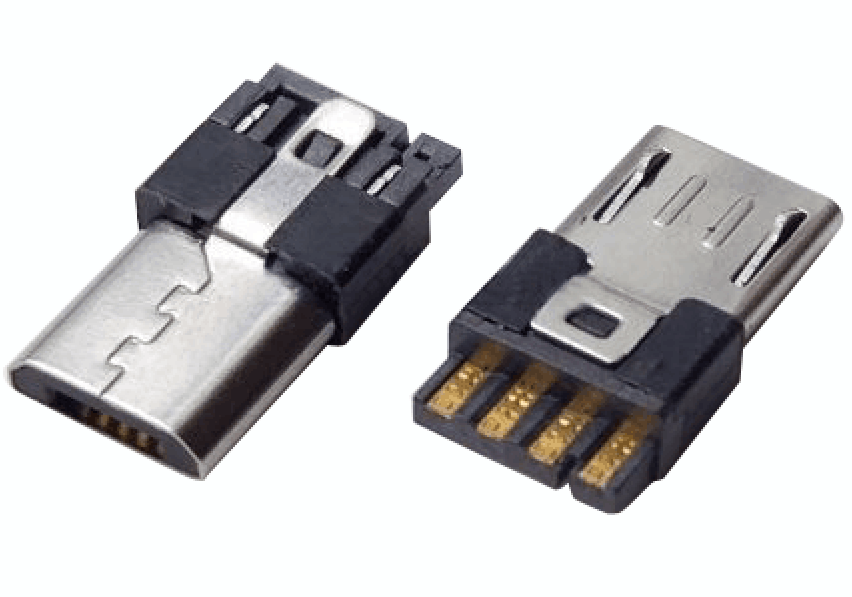1.What is the size, current and voltage rating of this connector? The
Din41612 Connector is a type of electrical connector that is widely used in a variety of electronic applications. It is known for its high reliability and versatile design. The connector is named after the Deutsches Institut für Normung (DIN), the German standardization organization that established the specifications for this type of connector.
In terms of size, the DIN41612 connector typically comes in different variations, including 32, 48, 64, 96, and 128 contact positions. The size and number of contacts can vary depending on the specific application requirements. The connector is designed to provide a secure and stable connection between various electronic components, such as printed circuit boards (PCBs) and other electrical devices.
The current and voltage rating of the DIN41612 connector depends on the specific version and configuration. Generally, the connector is capable of handling moderate to high levels of current and voltage. The current rating can range from a few milliamperes (mA) up to several amperes (A), depending on the size and design of the contacts. Similarly, the voltage rating can vary from a few volts (V) to several hundred volts (V), again depending on the specific version and configuration.
The DIN41612 connector is widely used in applications such as telecommunications, computer systems, industrial equipment, and automotive electronics. Its versatility and reliability make it suitable for a wide range of electronic devices and systems. The connector is designed to withstand the demands of harsh environments, including temperature variations, vibrations, and mechanical stress.
One notable feature of the DIN41612 connector is its modular design, which allows for easy customization and expansion. The connector can be easily modified by adding or removing contact modules, allowing for flexibility in terms of the number of connections and pin configurations. This modular design makes the DIN41612 connector highly adaptable to different application requirements.
In addition, the DIN41612 connector is designed to provide excellent electrical performance, ensuring low contact resistance and high signal integrity. The connector utilizes a reliable contact system, which ensures a secure and stable connection even in high-vibration environments. The contacts are typically made of high-quality materials such as gold-plated copper alloy, which offers excellent conductivity and corrosion resistance.
In summary, the DIN41612 connector is a versatile and reliable electrical connector that is widely used in various electronic applications. Its modular design, size variations, and high electrical performance make it suitable for a wide range of devices and systems. The connector's current and voltage ratings depend on the specific version and configuration, allowing for flexibility in meeting different application requirements.
2. Are there different socket types to choose from? The DIN41612 connector offers various socket types to choose from, providing flexibility and compatibility with different system requirements. These socket types are designed to accommodate specific pin configurations and provide reliable connections.
One commonly used socket type is the Type C socket. It features a 2.54mm pitch and is widely used in applications such as telecommunications and industrial equipment. The Type C socket typically offers a high number of contact positions, ranging from 32 to 160, allowing for a wide range of connections.
Another commonly used socket type is the Type R socket. It features a 2.0mm pitch and is often used in applications that require a high-density connection. The Type R socket is available in various contact position options, ranging from 16 to 160, providing flexibility for different system requirements.
In addition to Type C and Type R sockets, there are also other socket types available, such as Type B and Type D. These socket types have different pitch sizes and contact arrangements, offering flexibility for specific application needs. Type B sockets, for example, feature a 5.08mm pitch and are commonly used in power applications due to their ability to handle higher current ratings.
The DIN41612 connector's socket types are designed to ensure reliable and stable connections. They are typically made of high-quality materials, such as thermoplastic or thermosetting insulators, and feature durable metal contacts. The contacts are often gold plated to enhance conductivity and corrosion resistance, ensuring excellent electrical performance.
It's important to note that the selection of socket type depends on the specific requirements of the application. Factors such as the number of contact positions, pitch size, current rating, and space limitations should be considered when choosing the appropriate socket type for a particular system.
Overall, the DIN41612 connector offers a range of socket types to choose from, providing versatility and adaptability for different applications. Whether it's for telecommunications, industrial equipment, or power applications, the DIN41612 connector's socket types can accommodate various pin configurations and provide reliable connections for optimal system performance.
3.Main purposes and application areas The
Din 41612 connector, also known as the Deutsches Institut für Normung (German Institute for Standardization) 41612 connector, is a widely used standard connector in the electronics industry. It is a type of
Rectangular Connector that follows the DIN standards for dimensions and electrical characteristics. The DIN 41612 connector is known for its reliability, versatility, and compatibility with a wide range of applications.
The main purposes of the DIN 41612 connector include:
Signal Transmission: The DIN 41612 connector is designed to facilitate the transmission of electrical signals between different electronic devices or components. It provides a secure and stable connection for signals to pass through, ensuring efficient communication within a system.
Power Distribution: In addition to signal transmission, the DIN 41612 connector is also used for power distribution purposes. It allows for the safe and efficient transfer of power between connected devices, ensuring a reliable power supply for the system.
Board-to-Board Connections: The DIN 41612 connector is commonly used for board-to-board connections in electronic devices. It enables the connection of different circuit boards within a system, allowing for the exchange of data and signals between various components.
Modular Design: The DIN 41612 connector features a modular design that allows for easy installation and maintenance. Its versatile layout and configuration options make it suitable for a wide range of applications and system designs.
The DIN 41612 connector finds application in various industries and areas, including:
Telecommunications: The DIN 41612 connector is commonly used in telecommunications equipment such as routers, switches, and communication systems. It enables the connection of different modules and components, supporting data transmission and signal processing.
Industrial Automation: In industrial automation systems, the DIN 41612 connector is utilized for connecting control panels, sensors, and other devices. It helps establish communication between different components, enabling efficient and automated operation.
Computer Systems: The DIN 41612 connector is widely used in computer systems for connecting expansion cards, memory modules, and other peripherals to the motherboard. It ensures a reliable and secure connection for data transfer and system operation.
Test and Measurement Equipment: The DIN 41612 connector is also utilized in test and measurement equipment for connecting various instruments and devices. It provides a standardized interface for data transfer and signal processing.
In summary, the DIN 41612 connector is a versatile and reliable connector that serves multiple purposes in the electronics industry. Its standardized design, compatibility with different applications, and wide range of applications make it a popular choice for engineers and designers working on electronic systems and devices.
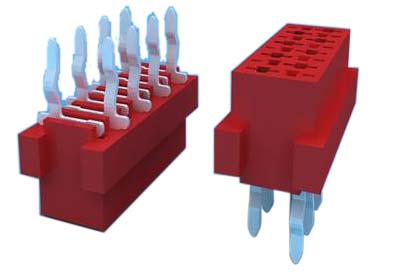
4. How durable and reliable is it? The DIN41612 connector is known for its durability and reliability, making it highly suitable for various electronic applications. This connector is designed to withstand harsh environments and provide a stable and secure connection over an extended period.
One of the key factors that contribute to the durability of the DIN41612 connector is its construction. The connector is typically made of high-quality materials, such as thermoplastic or thermosetting insulators, which provide excellent mechanical strength and resistance to temperature variations. The metal contacts used in the connector are often made of materials like copper alloy, which offer good conductivity and corrosion resistance.
The DIN41612 connector is designed to meet demanding performance requirements. It features a reliable contact system that ensures low contact resistance and high signal integrity. The contacts are often gold-plated to enhance conductivity and prevent oxidation, ensuring long-term reliability.
In addition to its construction and contact materials, the DIN41612 connector also undergoes rigorous testing to ensure its reliability. Manufacturers subject the connector to various tests, including mechanical shock, vibration, and temperature cycling tests, to verify its performance under different conditions. These tests ensure that the connector can withstand the demands of real-world applications and maintain a reliable connection over time.
Moreover, the DIN41612 connector is designed to provide a secure and stable connection even in high-vibration environments. Its locking mechanism ensures that the connector remains securely mated, preventing accidental disconnection that could disrupt the system's operation. This feature enhances the overall reliability of the connector.
The DIN41612 connector's reputation for durability and reliability has made it a preferred choice in various industries, including telecommunications, computers, industrial equipment, and automotive electronics. Its ability to withstand harsh environments, maintain excellent electrical performance, and provide a secure connection has made it a trusted solution for many critical applications.
In summary, the DIN41612 connector is recognized for its durability and reliability. Its construction, contact materials, and rigorous testing ensure long-lasting performance in demanding environments. Whether it is subjected to mechanical stress, temperature variations, or high-vibration conditions, the DIN41612 connector consistently delivers a stable and secure connection, making it a reliable choice for a wide range of electronic applications.
5. How does it work? The DIN41612 connector is a versatile and reliable electrical connector used in various applications. It is designed to provide a secure and stable connection between electronic devices.
At its core, the DIN41612 connector consists of a male connector (plug) and a female connector (socket). The plug and socket have a specific pin configuration that allows them to mate with each other. The pins in the plug are designed to fit into corresponding sockets in the socket, creating electrical contact.
To establish a connection, the plug is inserted into the socket, aligning the pins with the sockets. The connector is designed with a locking mechanism that ensures a secure mating. This locking mechanism can be in the form of a latch or screw mechanism, depending on the specific design of the connector.
Once the plug is fully inserted and locked into the socket, the pins come into contact with the sockets, establishing electrical connections. The pins and sockets are made of conductive materials, usually copper alloy, to ensure good conductivity. In some cases, the pins may be gold-plated to enhance conductivity and prevent corrosion, ensuring reliable electrical performance.
The DIN41612 connector can accommodate different pin configurations, depending on the specific socket type. The pin configurations are designed to meet the requirements of different applications, such as telecommunication, industrial equipment, and power applications. The connector's versatility allows for a wide range of applications, from low-density connections with fewer pins to high-density connections with a large number of pins.
The DIN41612 connector is also designed to handle various electrical currents. It is capable of carrying both low and high currents, depending on the specific socket type and pin configuration. This makes it suitable for different power requirements in different applications.
In summary, the DIN41612 connector works by mating the plug and socket, establishing electrical contact between the pins and sockets. The secure locking mechanism ensures a stable connection, while the conductive materials used in the pins and sockets ensure good electrical conductivity. With its versatility in pin configuration and current-carrying capacity, the DIN41612 connector is a reliable choice for a wide range of electronic applications.
6. How to install and use? Installing and using the DIN41612 connector is a ``straightforward process that requires careful attention to ensure a proper and secure connection. Here are the steps to install and use the DIN41612 connector:
Prepare the connectors: Before installation, ensure that both the male (plug) and female (socket) connectors are in good condition. Inspect the connectors for any damage or bent pins that may hinder proper mating.
Align the connectors: Position the male connector in front of the female connector, aligning the pins in the plug with the corresponding sockets in the socket. It is crucial to align them correctly to prevent damage to the pins or sockets during connection.
Insert the plug into the socket: Gently insert the plug into the socket, ensuring that the pins go into the sockets smoothly. Apply even pressure on the plug, pushing it straight into the socket. Avoid using excessive force, as it may cause damage to the connector.
Secure the connection: Once the plug is fully inserted into the socket, engage the locking mechanism to secure the connection. Depending on the specific design, this may involve latching or screwing the connectors together. Make sure the locking mechanism is fully engaged to prevent accidental disconnection.
Test the connection: After the connectors are securely mated, it is essential to test the connection for proper electrical continuity. Use a multimeter or a suitable testing device to check the electrical continuity between the pins and sockets. This step ensures that all the pins are making reliable connections.
Ensure strain relief: To prevent stress on the connectors and cables, provide strain relief. This can be accomplished by using cable clamps or cable ties to secure the cables near the connectors. Strain relief helps protect the connectors from excessive bending or pulling forces that could damage the connection.
Disconnecting the connectors: When it is necessary to disconnect the connectors, ensure that no power is flowing through the circuit. Carefully release the locking mechanism and gently pull the plug out of the socket. Avoid pulling the cables directly as it may damage the connectors or cables.
It is crucial to follow these steps to ensure a proper and secure installation of the DIN41612 connector. By carefully aligning the connectors, securing the connection, and providing strain relief, the DIN41612 connector can be effectively used in various electronic applications, including telecommunications, industrial equipment, and power systems.

